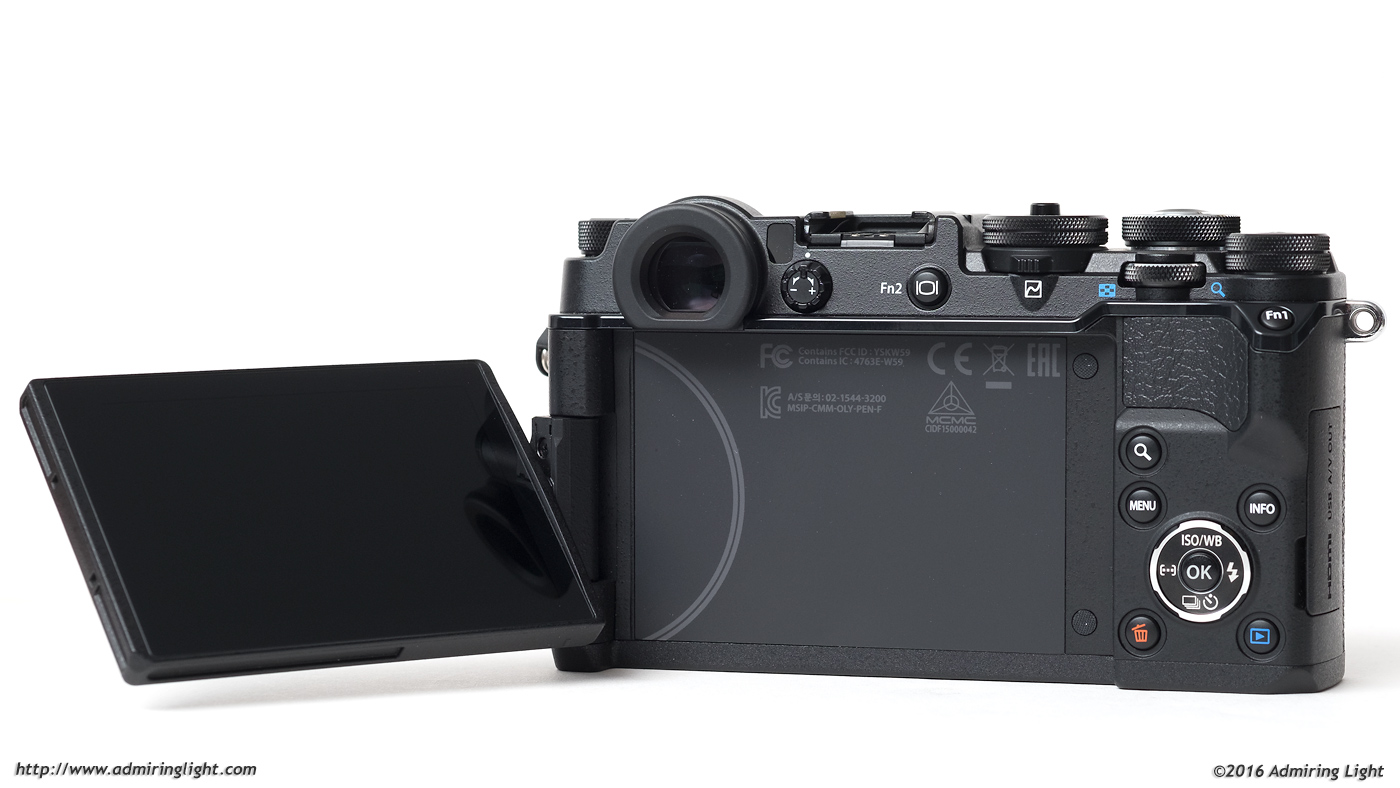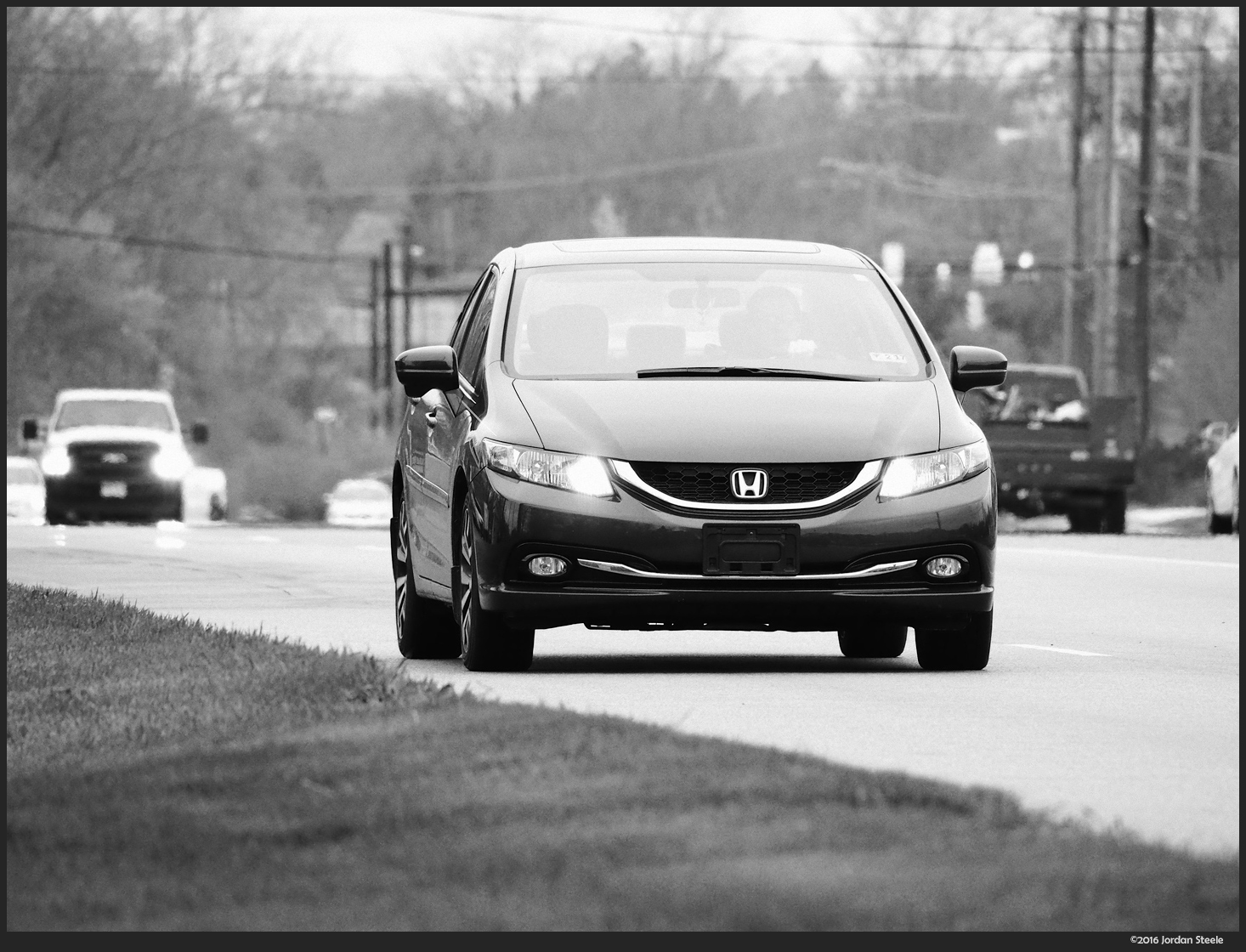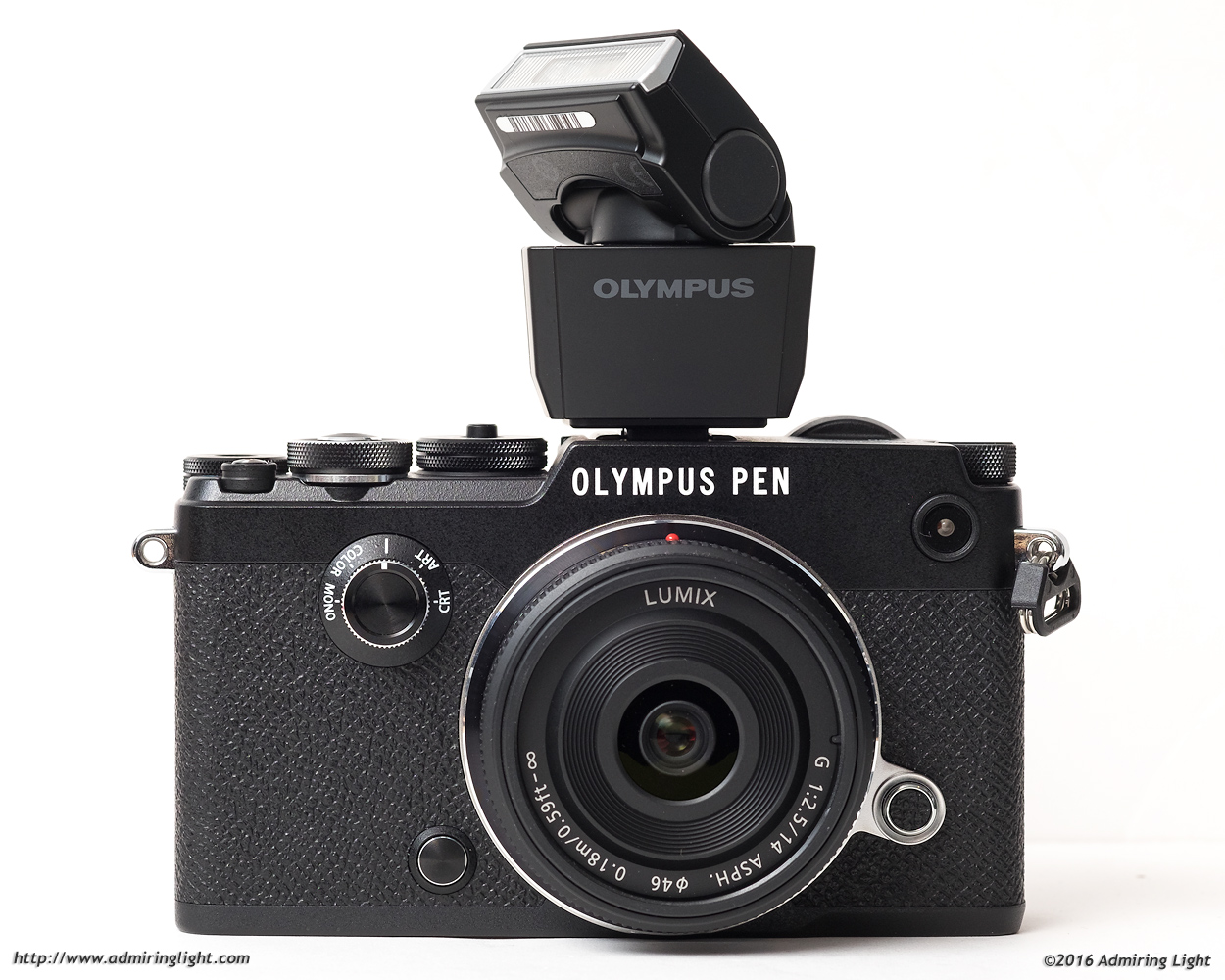Viewfinder and Rear Screen
The Pen-F is the first Pen series camera from Olympus to feature an integrated viewfinder, and it’s been a long time coming. The Pen-F electronic viewfinder (EVF) is almost identical to the one in the E-M10 Mark II, which means it’s smaller than the large viewfinders found it most of today’s top tier mirrorless cameras, but the 0.62x magnification still provides a larger view than most APS-C DSLRs. The 2.36 million dot EVF is clear and crisp, with good detail and excellent color and contrast. There’s limited lag in most lighting conditions, though it slows a bit in dimmer light. Overall, it’s a fine finder, though not one that stands out in the crowd of mirrorless cameras.

The rear screen is a 1 million dot fully articulated touch screen, which is a first on a Pen camera. The full articulation allows for easy viewing of the live feed from almost any angle, including portrait orientation shots low to the ground. I’ve always felt mixed about fully articulated screens, as I love the ability to get low in portrait orientation, but it’s less fluid to tilt it out for low horizontal shots. I also don’t like that the view is offset by a considerable margin from the lens when shooting horizontally. Overall, however, it’s a better option than a straight tilt screen, and the one on the Pen-F is fluid and easy to position. That is, once you get it out. The deep area to get at the screen is the area where the thumb rest sits, making it very difficult to pull the screen out when handholding the camera. You can also pull it out from the bottom, but this is also somewhat difficult.
Autofocus and Performance
The Pen-F has the same contrast detect autofocus system as the recent OM-D E-M5 II, and as such, there’s nothing particularly new to report with regards to the AF. The camera is still among the fastest focusers in the mirrorless world when it comes to single shot AF, locking nearly instantly with most lenses, and with excellent accuracy. While low light AF performance isn’t amazing, it still manages to lock in dimmer light most of the time, though occasional hunting can happen, especially with slower lenses.
Continuous autofocus is pretty good for a contrast detect system, but lags behind mirrorless cameras with on-sensor phase-detect autofocus. I was able to get a reasonable hit rate on cars coming towards me when using the Olympus 75-300mm, though it was limited to further distances. Once the car got fairly close, the ability to maintain an accurate point of focus was lost. The shot below is from a sequence of 9 shots, of which 4 of the 9 shots were in perfect focus. This isn’t a great hit rate, but it’s not terribly bad for a CDAF system and a fast moving subject. In more moderate situations it’ll fare better. Still, a phase detect system will have a notably higher success rate in these types of situations.

The Pen-F can maintain continuous AF between frames when shooting at the continuous low frame rate of 5 frames per second. There’s also a high burst rate of 10 frames per second, but when this mode is selected, the focus is locked after the first exposure. With the Pen-F’s electronic shutter capabilities, there’s also a 20 fps high+ mode using the electronic shutter, though this is less useful for action due to the rolling shutter effects that will cause odd warping of quickly moving subjects, even at fast shutter speeds. The buffer is fairly ample as well, especially given the style of camera. The Pen-F can record over 40 JPEGs and nearly 30 RAW files before slowing down when shooting in 10 fps burst mode, a fairly impressive buffer for a camera that is not really geared towards action shooting.
Aside from the action oriented items, the Pen-F is a responsive camera that doesn’t force you to wait on it. Write times aren’t super fast, but the large buffer means that it almost never hinders shooting.
Flash
The Pen-F lacks a built-in pop-up flash, which is a bit of a bummer, but it includes the rather capable little clip on flash that first appeared with the OM-D E-M5 Mark II. This flash isn’t particularly powerful, but it can swivel and bounce to provide much better lighting quality than most clip on flashes. Unfortunately, the the low power necessitates a higher ISO when bouncing the flash, but the results are still going to be better than a direct flash at low ISO. The direct flash works quite well in macro situations as well.

In practice, you’ll still be better off using a dedicated flashgun that has a lot more power, though it’s a task that is made difficult by the small size of the camera. Using a flash like the Nissin i40, which is very compact, is a good idea. However, Olympus is to be commended for packaging a clip on flash that does more than the typical on-camera flash. The shot below was taken with the clip-on flash, using ISO 800 to make up for the low power.

Now let’s dive into some of the key features that the Pen-F has, including Wi-Fi, High Resolution mode and more.





Leave a Reply